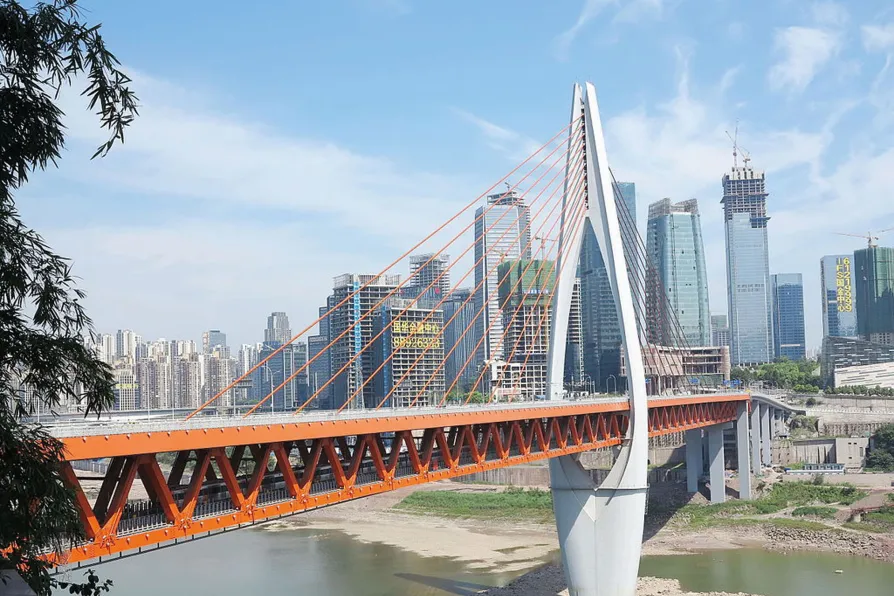ANSELM ELDERGILL recalls the misjudgments, mishaps and moments of farce that shaped his years in legal practice

 Qiansimen Bridge
[Creative Commons — Nyx Ning]
Qiansimen Bridge
[Creative Commons — Nyx Ning]
IN 1993, Deng Xiaoping walked across the newly opened 8,354-metre bridge connecting the Yangpu District to the Pudong New Area over Shanghai’s Huangpu River. On each pylon, a handwritten inscription from the elder statesman bore the bridge’s name: Yangpu Daqiao, or Yangpu Bridge.
Deng had navigated the People’s Republic of China through a remarkable process of transformation. He declared that socialism could not be built from poverty and set out to build the foundations for what he called the “moderate prosperity” of the Chinese people — then among the world’s poorest.
Now, at the age of 89, he surveyed the results of his efforts. “How wonderful that the road we have walked outperformed all the books we have read,” he said.
I recalled this story on a trip to the sprawling city of Chongqing. From its Qiansimen Bridge — one of the Twin River Bridges across the Yuzhong peninsula — I looked out at the meeting point of the Jialing and Yangtze rivers.
The water reflected a skyline so dazzling that it sometimes felt imagined. To the right, the opera house — a mute olive by day — glowed bright red. To the left, a strip of light dashed across the next bridge over the river, its reflection carried through the water like a bolt of lightning in slow motion. The skyline danced with light.
It was here that, decades earlier, peddlers working in the riverbanks invented the Chongqing hot pot, a hearty dish of spiced stock in which they dipped vegetables and meats — tripe, liver, stomach, lotus, needle mushrooms and leafy greens — to stay warm in the frigid winters.
Until the 1980s, boats ferried people across the rivers that snaked through the city; no bridges had yet been built across them. Today, Chongqing has some 14,000 bridges, and the hot pot is served by restaurants high above the wharves to people who have long forgotten that biting cold. What would Deng make of this sight?
There is a metaphor often used to describe the illinear road towards socialism in China: “Crossing the river by feeling the stones.” It speaks to the uncertainties inherent in navigating a path with no precedent.
Six years ago, the People’s Republic of China became older than the USSR would ever be. Now, it faces thresholds and barriers that older socialist projects did not get the chance to overcome. There is no template to follow, and no established model to apply.
Five years ago, 70 years after the People’s Republic was founded, Chinese President Xi Jinping spoke of the spirit of “opening roads where we find mountains and building bridges where we meet rivers.”
No longer wading blindly through the river, China would now bridge it — in realms both metaphorical and material. Today, among many other infrastructural feats, more than half of the world’s ten longest bridges across every category are in China.
The first bridge to be designed and built entirely by Chinese engineers crossed the Qiantang River in the city of Hangzhou, Zhejiang province.
It would come to form a junction for two critical routes: the Shanghai-Hangzhou-Ningbo railway, which connected Hangzhou with major cities to its north-east and north-west, and the Zhejiang-Jiangxi railway, which ran east-west from Zhejiang to the border of Hunan.
But, to halt the advancing Japanese army, the 1,453-meter bridge was blown up just three months after it opened in September 1937. It took three years to build, hours to destroy, and a decade to reconstruct.
By 2018, the People’s Republic inaugurated one of the most ambitious infrastructural projects in human history: a 55-kilometre network of bridges and undersea tunnels spanning the Lingding and Jiuzhou channels.
This “Great Wall of the sea” connects three major cities on the Pearl River Estuary: Hong Kong, Zhuhai and Macau. It cuts a four-hour drive to 30 minutes. Thirty-two kilometres north along the same estuary, a new bridge inaugurated this year cuts the travel time between Shenzen and Zhongshan from two hours to 30 minutes.
I have an unwritten rule of travel. Whenever I visit a city on a river, I do not leave before crossing one of its bridges. Bridges extend a society’s reach. They are carriers of culture and commerce; vehicles for scientific and technological advancement. They narrow geographies and shorten timespans. They unite what was once separate.

STEPHEN BELL reports from a delegation that traced the steps of China’s socialist revolution from its first modest meetings to the Red Army’s epic 9,000km battle to create the modern nation that today defies every capitalist assumption

One of the major criticisms of China’s breakneck development in recent decades has been the impact on nature — returning after 15 years away, BEN CHACKO assessed whether the government’s recent turn to environmentalism has yielded results

PAWEL WARGAN juxtaposes the thriving industrial centre Jiayuguan in China, with the prevailing images of decaying East European great industrial cities











